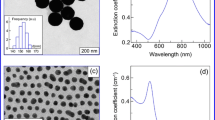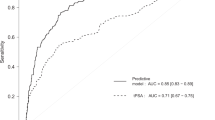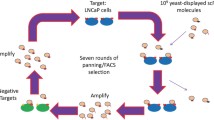Abstract
Several monoclonal antibodies (mAbs) and novel mAb-based assays for the androgen receptors (AR) have been developed. Large amounts of the recombinant human AR protein produced by a baculovirus expression system were used as an antigen to produce mAbs. Twenty-nine AR-specific mAbs were first confirmed by Western blot analysis and were then characterized for their immunoglobulin isotypes, epitopes, and epitope localization in AR. Novel assays using flow cytometry and sandwich enzyme-linked immunosorbent assays (ELISA) were established to detect AR-expressing cells and to quantify soluble AR protein, respectively. Using immunostaining, we identified several anti-AR mAbs exclusively recognizing AR within the nuclei of the prostate cancer cell line LNCaP and of prostate tissues in both frozen and paraffin-embedded sections, whereas other mAbs could detect AR in both nuclear and cytoplasmic compartments. Interestingly, certain mAbs, such as G122-25 and G122-77, could distinguish the androgen-bound AR from the unoccupied AR. In sum, many purified AR protein and anti-AR mAbs, together with the assays developed, could be powerful tools for the study of functional AR and for the diagnosis of prostatic cancers.
Similar content being viewed by others
References
Jost A: Gonadal hormones in the sex differentiation of the mammalian fetus. Organogenesis. Holt, Rinehart & Wilson, New York, 1965 pp 611–628.
Mooradian AD, Morley JE, Korenman SG: Biological actions of androgens. Endocr Rev 8: 1–28, 1987
Huggins C, Stevens RE Jr, Hodges CV: Studies on prostate cancer. II. The effects of castration on advanced carcinoma of the prostate gland. Arch Surg 43: 209–223, 1941
Young WJ, Roecker EB, Weindruch R, Chang C: Quantitation of androgen receptor mRNA by competitive reverse transcriptionpolymerase chain reaction. Endocr J 2: 321–329, 1994
Takeda H, Nakamoto T, Kokontis J, Chodak GW, Chang C: Autoregulation of androgen receptor expression in rodent prostate: Immunohistochemical and in situ hybridization analysis. Biochem Biophys Res Commun 177: 488–496, 1989
Hulka BS, Beckman WC Jr, Checkoway H, DiFerdinando G, Hammond J E, Fried FA, Mickey DD, Stumpf WE, Clark TD: Androgen receptors detected by autoradiography in prostatic carcinoma and benign prostatic hyperplastic tissue. Prostate 10: 223–233, 1987
Liao S, Witte D, Schilling K, Chang C: The use of a hydroxylapatite-filter steroid receptor assay method in the study of the modulation of androgen receptor interaction. J Steroid Biochem 20: 11–17, 1984
Takeda H, Chodak G, Mutchnik S, Nakamoto T, Chang C: Immunohistochemical localization of androgen receptors with mono-and polyclonal antibodies to androgen receptor. J Endocrinol 126: 17–25, 1990
Paris F, Weinbauer GF, Blum V, Nieschlag E: The effect of androgens and antiandrogens on the immunohistochemical localization of the androgen receptor in accessory reproductive organs of male rats. J Steroid Biochem Mol Biol 48: 129–137, 1994
Kuil CW, Mulder E: Mechanism of antiandrogen action: Conformational changes of the receptor. Mol Cell Endocrinol 102: R1–R5, 1994
Kuil CW, Berrevoets CA, Mulder E: Ligand-induced conformational alterations of the androgen receptor analyzed by limited trypsinization. Studies on the mechanism of antiandrogen action. J Biol Chem 270: 27569–27576, 1995
Jensen EV, Suzuki T, Kawashima T, Stumpf WE, Jungblut PW, DeSombre ER: A two-step mechanism for the interaction of estradiol with rat uterus. Proc Natl Acad Sci USA 59: 632–638, 1968
Gorski J, Toft D, Shyamala G, Smith D, Notides A: Hormone receptors: Studies on the interaction of estrogen with the uterus. Recent Prog Horm Res 24: 45–81, 1968
Wikstrom AC, Bakke O, Okret S, Bronnegard M, Gustafsson J-A: Intracellular localization of the glucocorticoid receptor: Evidence for cytoplasmic and nuclear localization. Endocrinology 120: 1232–1242, 1987
Barsony J, Pike JW, DeLuca HF, Marx SJ: Immunocytology with microwave-fixed fibroblasts shows 1a, 25-dihydroxyvitamin D3-dependent rapid and estrogen-dependent slow reorganization of vitamin D receptors. J Cell Biol 111: 2385–2395, 1990
Kemppainen JA, Lane MV, Sar M, Wilson EM: Androgen receptor phosphorylation, turnover, nuclear transport, and transcriptional activation. J Biol Chem 267: 968–974, 1992
Garcia-Arenas R, Lin FF, Lin D, Jin LP, Shih CC, Chang C, Lin MF: The expression of prostatic acid phosphatase is transcriptionally regulated in human prostate carcinoma cells. Mol Cell Endocrinol 111: 29–37, 1995
Lin MF, Meng TC, Rao PS, Chang C, Schonthal AH, Lin FF: Expression of human prostatic acid phosphatase correlates with androgen-stimulated cell proliferation in prostate cancer cell lines. J Biol Chem 273: 5939–5947, 1998
Fletcher PW, Dias JA, Sanzo MA, Reichert LEJ: Inhibition of FSH action on granulosa cells by low molecular weight components of follicular fluid. Mol Cell Endocrinol 25: 303–315, 1982
Chang C, Wang C, DeLuca HF, Ross TK, Shih CC: Characterization of human androgen receptor overexpressed in the baculovirus system. Proc Natl Acad Sci USA 89: 5946–5950, 1992
Kimura N, Mizokami A, Oonuma T, Sasano H, Nagura H: Immunocytochemical localization of androgen receptor with polyclonal antibody in paraffin-embedded human tissues. J Histochem Cytochem 41: 671–678, 1993
Galfre G, Howe SC, Milstein C, Butcher GW Howard JC: PEG fusion method. Nature 266: 550–552, 1977
Huang CM, Huang HJ, Lee SC: Detection of immunoglobulin heavy chain IgG3 polymorphism in wild mice with xenogeneic monoclonal antibodies. Immunogenetics 20: 565–575, 1984
Parsons M, Oi VT, Huang CM, Herzenberg LA: Immunogenetics 18: 323–334, 1983
Huang CM, Parsons M, Oi VT, Huang HJ, Herzenberg LA: Genetic characterization of mouse immunoglobulin allotypic determinants (allotopes) defined by monoclonal antibodies. Immunogenetics 18: 311–321, 1983
Harlow E, Lane DP: Antibodies: A Laboratory Manual. Cold Spring Harbor Laboratory, New York, pp 561–598, 1988
Liao S, Witte D: Autoimmune anti-androgen-receptor antibodies in human serum. Proc Natl Acad Sci USA 82: 8345–8348, 1985
Demura T, Kuzumaki N, Oda A, Fujita H, Taniguchi N, Asano Y, Takayama N, Nonomura K, Koyanagi T: Establishment of monoclonal antibody to human androgen receptor and its clinical application for prostate cancers. Am J Clin Oncol 11: S23–S26, 1988
Georget V, Lobaccaro JM, Terouanne B, Mangeat P, Nicolas JC, Sultan C: Trafficking of the androgen receptor in living cells with fused green fluorescent protein-androgen receptor. Mol Cell Endocrinol 129: 17–26, 1997
DeFranco DB, Borror KC, Garabedian MJ, Brautigan DL: Protein phosphatase types 1 and /or 2A regulate nucleocytoplasmic shuttling of glucocorticoid receptors. Mol Endocr 5: 1215–1228, 1991
Chang C, Whelen C, Popovich T, Kokontis J, Liao S: Fusion proteins containing androgen receptor sequences and their use in the production of poly/monoclonal anti-androgen receptor antibodies. Endocrinology 125: 1097–1099, 1989
Riley RS, Mahin EJ, Ross W: Clinical Applications of Flow Cytometry. IGAKU-SHOIN Medical Publishers, New York, 1993, pp 423–444
Magi-Galluzzi C, Xu X, Hlatky L, Hahnfeldt P, Kaplan I, Hsiao P, Chang C, Loda M: Heterogeneity of androgen receptor content in advanced prostate cancer. Mod Pathol 10: 839–845, 1997
Makris A, Allred DC, Powles TJ, Dowsett M, Fernando IN, Trott PA, Ashley SE, Ormerod MG, Titley JC, Osborne CK: Cytological evaluation of biological prognostic markers from primary breast carcinomas. Breast Cancer Res Treat 44: 65–74, 1997
Author information
Authors and Affiliations
Rights and permissions
About this article
Cite this article
Smith, C.CY., Young, WJ., Wang, CH. et al. Monoclonal anti-androgen receptor antibodies: Production, characterization, and potential diagnostic applications. Mol Cell Biochem 201, 131–140 (1999). https://doi.org/10.1023/A:1007054210133
Issue Date:
DOI: https://doi.org/10.1023/A:1007054210133




